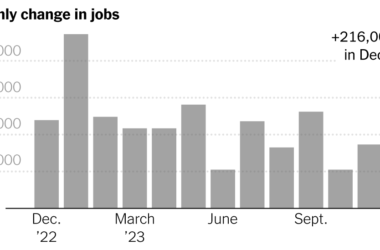Kevin Rezvani came of age in kitchens: spending summers at his grandfather’s bakery in Japan, doing work-study in his college cafeteria and working for years as a line cook at mid-tier restaurants, along with some stints in fast food.
By his late 20s, the biggest takeaway Mr. Rezvani had from his experience “working in every kind of thing in food” was the industry’s widespread inability to reconcile the art of a kitchen, and the science of a restaurant, with the math of a business.
Too many ventures, he says, are not profitable enough to justify all the work hours needed from managers and employees to stay afloat, much less grow. In other words, they fall short on productivity.
“There’s a very fine line between doing OK, and doing well in this business,” said Mr. Rezvani, now 36. “And if you’re doing OK, it’s not worth your time.”
He and two partners opened a casual sit-down restaurant near Rutgers University a few years after his graduation. But in early 2020, they split from him over personal and business disagreements, and he was on his own.
To pay bills, he worked for a moving company and made deliveries for Amazon, which was booming during the lockdowns, as people idled at home spent their disposable income on buying goods.
Those sorts of businesses, Mr. Rezvani observed, are unornamented, lean and stringent about how many machines or work hours are needed per order. Looking for a second shot at opening a restaurant, he made maximizing output his North Star: “I was like, ‘I have to make this whole thing more efficient.’ It’s a business at the end of the day.”
In early 2021, he noticed a restaurant space for lease on East Seventh Street in the East Village neighborhood of Manhattan. The landlord, desperate for tenants after the pandemic shutdowns, gave him and his new partner a discount. They had to scrounge to make the security deposit, but believed in their bet.
“I maxed out my credit card,” Mr. Rezvani said. “And it hit.”
Featuring a minimalist menu, hole-in-the-wall square footage, and a limited set of ingredients and produce, 7th Street Burger opened that May and quickly took off. From 40 employees 16 months ago, it has grown into a chain with 330 employees across 13 locations and plans for a national expansion.
Some swankier, full-service restaurants in the city with long lists of overhead costs, a fluctuating work force and a set of rarely picked menu options are “making 200 bucks an hour” in sales, Mr. Rezvani argues. But on a good day, he can do $2,000 an hour “with three guys on the grill, with three items on my menu, nine ingredients in my restaurant.”
“We’re a cash machine,” Mr. Rezvani said.
In Search of a Win-Win
7th Street is the sort of success story that exemplifies the nascent burst in productivity that the U.S. economy has experienced over the past year or so, after a plunge in 2021 and 2022.
Economists typically measure productivity as a simple ratio: the total amount of output an economy produces per hour worked by its labor force. On that score, productivity increased 2.7 percent in 2023, according to the Bureau of Labor Statistics, and over the last two quarters has been growing at more than double the rate from 2005 to 2019.
On a less technical level, productivity can generally be explained by the old axiom about “doing more with less,” or the folksy virtue of “getting the biggest bang for your buck.”
Economists tend to sigh with relief whenever they see a gain in productivity, because it offers a potential win-win for workers, customers and business owners: If businesses can make as much money or more in fewer work hours, then — according to standard economic logic — they can make more per hour, reinvest in operations and pay workers a bit more without sacrificing profitability (or leaning on price increases to push profits higher).
As Joseph Brusuelas and Tuan Nguyen, economists at the consulting firm RSM, put it in a note in late January: “The increase in American productivity over the past year, if sustained, is a potential game changer for the economy that represents that mythical rising tide that lifts the living standards of all.”
In recent history, the give-and-take between gains in productivity and increases in worker pay has been uneven. Many economic models suggest that if workers begin doubling their daily or hourly production, they are likely to be paid about twice as much as before. From 1979 to 2022, however, productivity grew by more than four times the inflation-adjusted 14.8 percent growth in compensation for average nonsupervisory workers in the private sector, who are roughly eight of 10 people in the labor force.
Still, so far in this cycle, productivity has acted like a secret sauce, enabling the other ingredients of what analysts have been calling a “soft landing” to coexist: slowing inflation, sturdy economic growth, strong wage gains and unemployment near record lows.
“Pandemic-related labor shortages caused a lot of businesses to think of how they could use labor more efficiently,” said Dean Baker, an economist at the Center for Economic and Policy Research, a labor-focused think tank in Washington. “So I’m going to be a productivity optimist for the first time in my life.”
A growing slate of firms in finance, manufacturing and transportation logistics are offering digital tools that — even without avant-garde A.I. features — seem to offer the ballyhooed promise of working “smarter, not harder” and cutting down on drudgery.
Ycharts, a company founded in 2009, sells a platform on which users visualize complex financial market data, then create sleek, customizable charts and portfolios. After recent updates, the company reported that its customers at financial advisory firms had been saving more than a dozen hours on average per week on the busywork of data analysis.
There has also been a swift overall shift toward corporate belt-tightening since 2021, in reaction to either higher borrowing costs brought on by higher interest rates or an expected slowdown in sales. And that has affected a range of investors as well as entrepreneurs who were part of the surge in business creation that began in 2020.
“There’s more pressure on businesses than ever to get to profitability as quickly as possible,” said Katie Tyson, 37, the founder of Hive Brands, a new web retailer that curates, vets and sells sustainable-branded food and wellness products.
Although she calls Hive “a child of the pandemic,” having launched in 2020 when borrowing was still ultracheap, “we’ve been very cost-conscious, I think in a way that the start-ups of the 2010s were not,” Ms. Tyson added. “It’s no longer growth at all costs.”
Businesses also appear to be responding more swiftly to shifting consumer habits. A greater emphasis on delivery and takeout orders, for instance, has lifted profit margins at many food businesses. Retail analysts report that better-targeted ads and growth in e-commerce have helped firms large and small. And champions of hybrid and remote work options argue that those models reduce wasted commuting hours and help executives employ the best of a talent pool regardless of location.
Fruits of a Tight Labor Market
Data on productivity can be misleading. Its core calculation — output per hour — worked best when America was an industrial and agricultural society, mainly producing bushels of wheat or nuts and bolts for manufactured goods, versus the harder-to-quantify services-oriented consumption that makes up most of today’s economy.
The data can be especially misleading when measured over short periods.
For instance: Did the entire U.S. economy truly become 20 percent more productive in the second quarter of 2020 on an annual basis, as a face-value reading of the data would suggest? Or was it just that millions of workers were laid off in a couple of months while the economy contracted only slightly, causing the simplistic ratio of output per worker to look better in a spurious way?
Apparent leaps in efficiency can go missing in official data, too, or lag behind for years. In 1987, the Nobel laureate economist Robert Solow observed that “you can see the computer age everywhere but in the productivity statistics.” (A brief surge showed up in the numbers in the late 1990s and early 2000s before petering out.)
In 2016, the chief economist at Google, Hal Varian, told Bloomberg: “We’re certainly not measuring productivity right — but then, we didn’t measure it right before, either. So are we doing a worse job measuring productivity than we used to? I think there are some arguments that suggest we are.”
Looking forward, a range of market analysts are making the case that a crucial variable in broad productivity improvement thus far has been an unemployment rate near record lows.
Peter Williams, an economist and managing director at 22V Research, an investment strategy and quantitative analysis firm, wrote in a recent note that “firms have been forced to innovate and adapt in an environment of tight labor markets.” He added that for many firms, relying on “low-cost labor and low-cost capital is not really an option anymore.”
When a company needs all hands on deck to keep up with sales, using layoffs to improve the bottom line can have the opposite effect. Instead, improving efficiency rather than reducing head count often becomes the better growth engine, or competitive edge.
Keeping productivity growth near current rates may require efficiency gains from A.I. technology and continued taming of inflation, though a range of Wall Street analysts are confident that both can happen.
For some labor economists — who have seen shareholders and business owners recoup the largest share of productivity gains over the past few decades while wage gains slumped — the primary question in the near future is whether workers will be able to obtain a larger slice of the pie this time.
Kathryn Anne Edwards, an economic policy consultant and an adjunct at the RAND Corporation, worries that future productivity gains may be largely attributed to technology innovations and not worker input or ability, weighing down average wage growth, which has recently managed to jump.
“Wages are determined by either power or productivity,” Ms. Edwards said. “The low wages that so many workers make are predicated on this notion that people are paid what value they bring. And that value is measured how exactly?”



